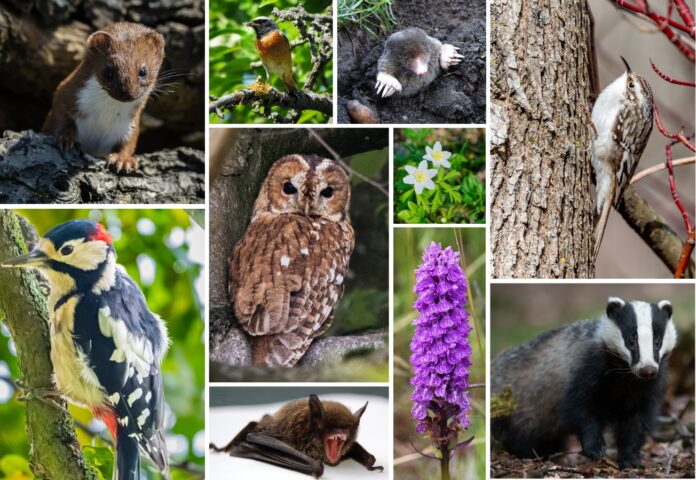There’s more creatures and wildlife that live in Poole’s Cavern & Buxton Country Park than most people realise. As one of England’s best examples of a well preserved underground show cave and the beautiful country park that surrounds the cavern, both are bursting with an array of flora and fauna, some well known and others not so. Thanks to the uncommon flora seen in the country park and Grin Low, the area is designated a site of special scientific interest (or SSI).
How many of the following have you spotted while you’ve been out and about? Our detailed guide on wildlife at Poole’s Cavern gives you tips on how to identify each animal or plant as well as information on their habitat and where to find them. Enjoy! 🦡
BATS
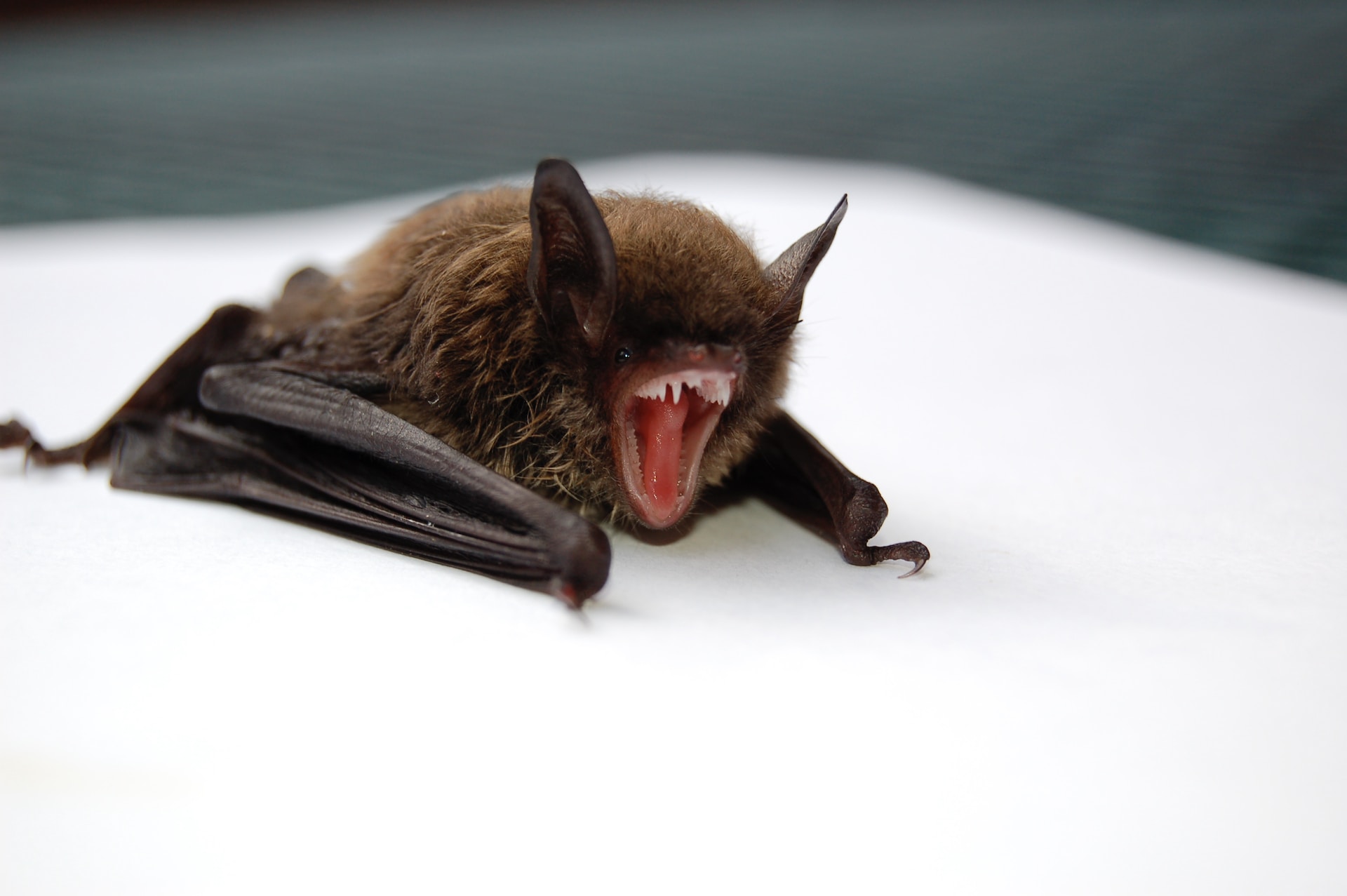
Bats can often be seen later in the day, just before dusk in and around the woodlands. The Derbyshire Bat Conservation Group regularly work with Poole’s Cavern and Buxton Country Park to monitor populations numbers and species present. The Whiskered bat, Daubentons bat and Long Eared Brown Bat have been seen here by the group during observation sessions.
How to identify: Individual species will be almost impossible to identify with the naked eye. Choose a dark area just before sunset, preferably on a dry, still night – and they’re most active in summer months.
WEASELS

Weasels are widespread across Britain, are our smallest carnivore and they look like a mini version of the Stoat. Weasels are very active hunters, feeding on small mammals such as voles and mice, as well as small birds. They are found in a variety of habitats: woodland, grassland, hedgerows, heathland and moorland. Weasels mate in spring and summer, having two litters of three to six kits a year.
How to identify: Orangey-brown back with a white throat and belly. Smaller than a Stoat, with a relatively shorter tail with no black tip. Usually grow to about 23cm long plus the tail at around 6cm. They could be anywhere in the park, hiding in undergrowth, it’s an ideal habitat for them.
HARES AND RABBITS
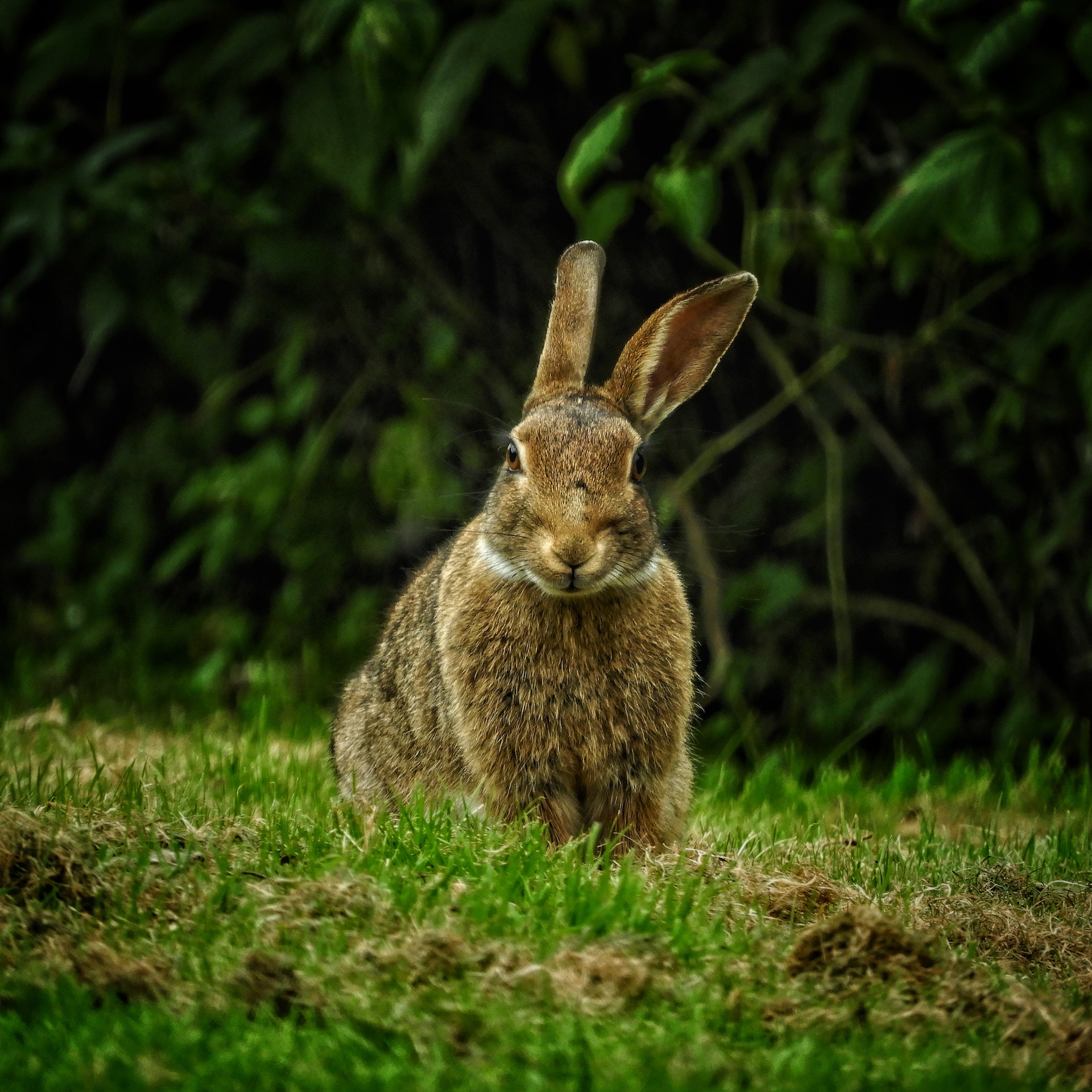
You should have no trouble in spotting rabbits and the evidence of such but keep a look out for the lesser seen Hare. These shy and reclusive creatures are harder to find but you’re more likely to see then first thing in the morning or early evening.
How to identify: Hares are generally larger than rabbits with longer ears and longer feet. They tend to be faster too. Look out for tufts of fur caught in brambles or their droppings on the ground, which resemble those of the rabbit but larger.
BADGERS

Badgers have an acute sense of smell and superb hearing to detect its main predator – humans. But if you find a sett first, you may just be able to glimpse one of the UK’s rarely seen wild animals, and, despite the cull, they’re thriving. June and July tend to be the best months to see them as you might see cubs too.
How to identify:
First, find your sett. Unlike smaller, rounder rabbit holes, badger holes are a squashed oval shape, reflecting their low-slung bodies. Badger poo is another clue: they leave neatly dug latrines nearby. Ensure the sett can be watched from a public footpath, or that you have permission from the landowner. Wear dark clothes and arrive about an hour before sunset.
HEDGEHOGS
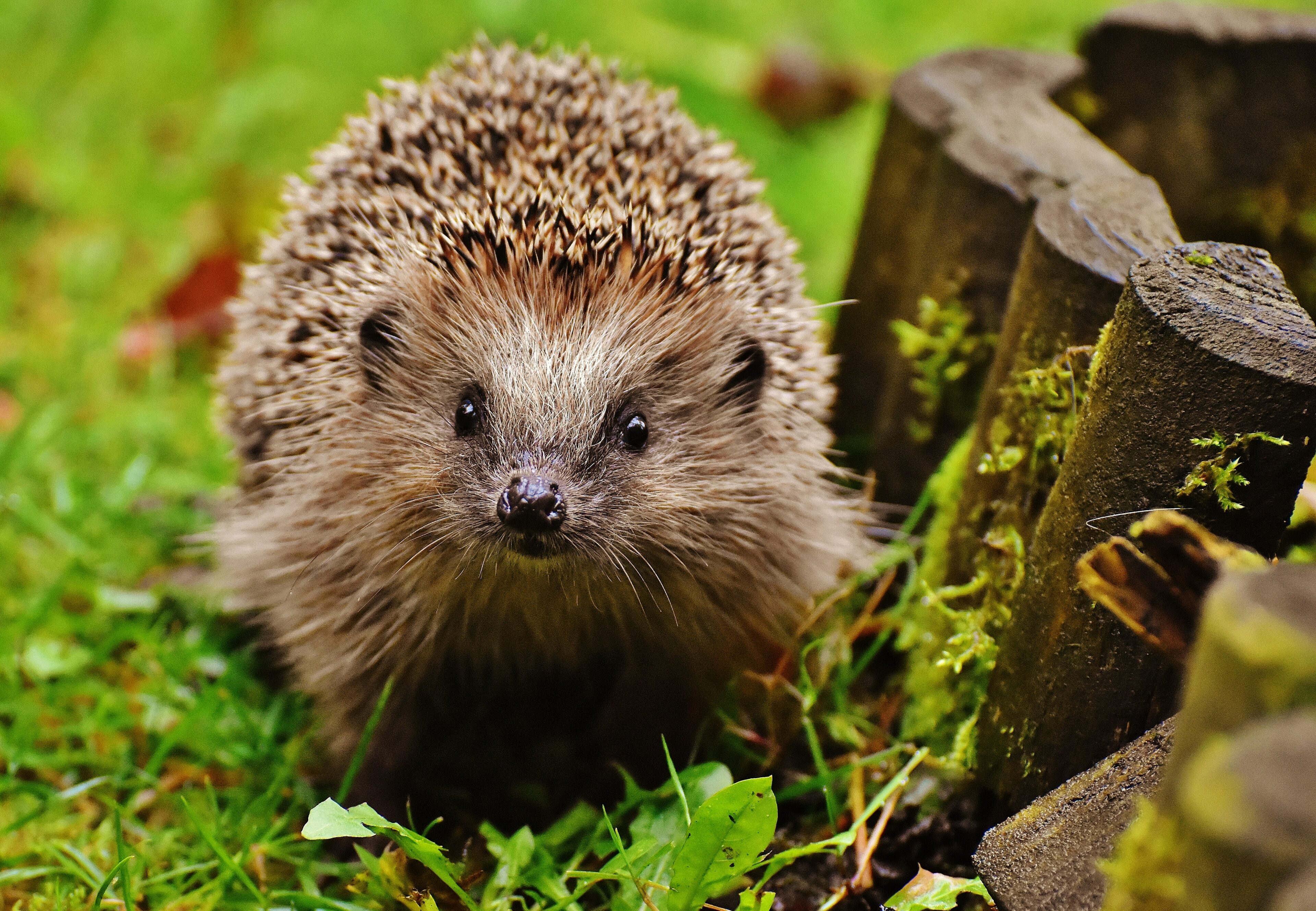
Hedgehogs are native to mainland Britain and are also found throughout northern and western Europe. The hedgehog has a powerful forefoot and claws for digging for its favourite food of slugs and worms – they may eat 40 or more slugs a night. They can also climb, swim and can sprint a surprisingly fast 6 mph! If threatened they can roll up into a ball as protection against predators. Their biggest enemy apart from man is the badger.
How to identify:
They can be seen during summer, later in the day and evening when they forage for food. They hibernate from November to April. You cant really miss their unique spikey coat and oval shape, often around 23cm long and 4cm tall. They prefer woodland edges, hedgerows and suburban gardens where food is plentiful.
MOLES

Moles are small, burrowing mammals known for their distinctive appearance and subterranean lifestyle. Moles predominantly inhabit underground environments, such as gardens, fields, and woodlands. As insectivores they prey on earthworms, grubs, and other invertebrates found in their subterranean domain. These industrious creatures play a vital role in aerating the soil and controlling pest populations, making them a fascinating and beneficial part of many ecosystems.
How to identify:
Measuring about 5 to 7 inches in length, these creatures have velvety, dark brown to black fur, tiny eyes, and powerful front limbs equipped with sharp claws, perfectly suited for digging intricate tunnel systems. Their conical snouts house highly sensitive whiskers, aiding in navigation underground. Although rarely seen above ground, the presence of molehills – small mounds of excavated soil – is a telltale sign of their activity.
FIELD/WOOD MOUSE
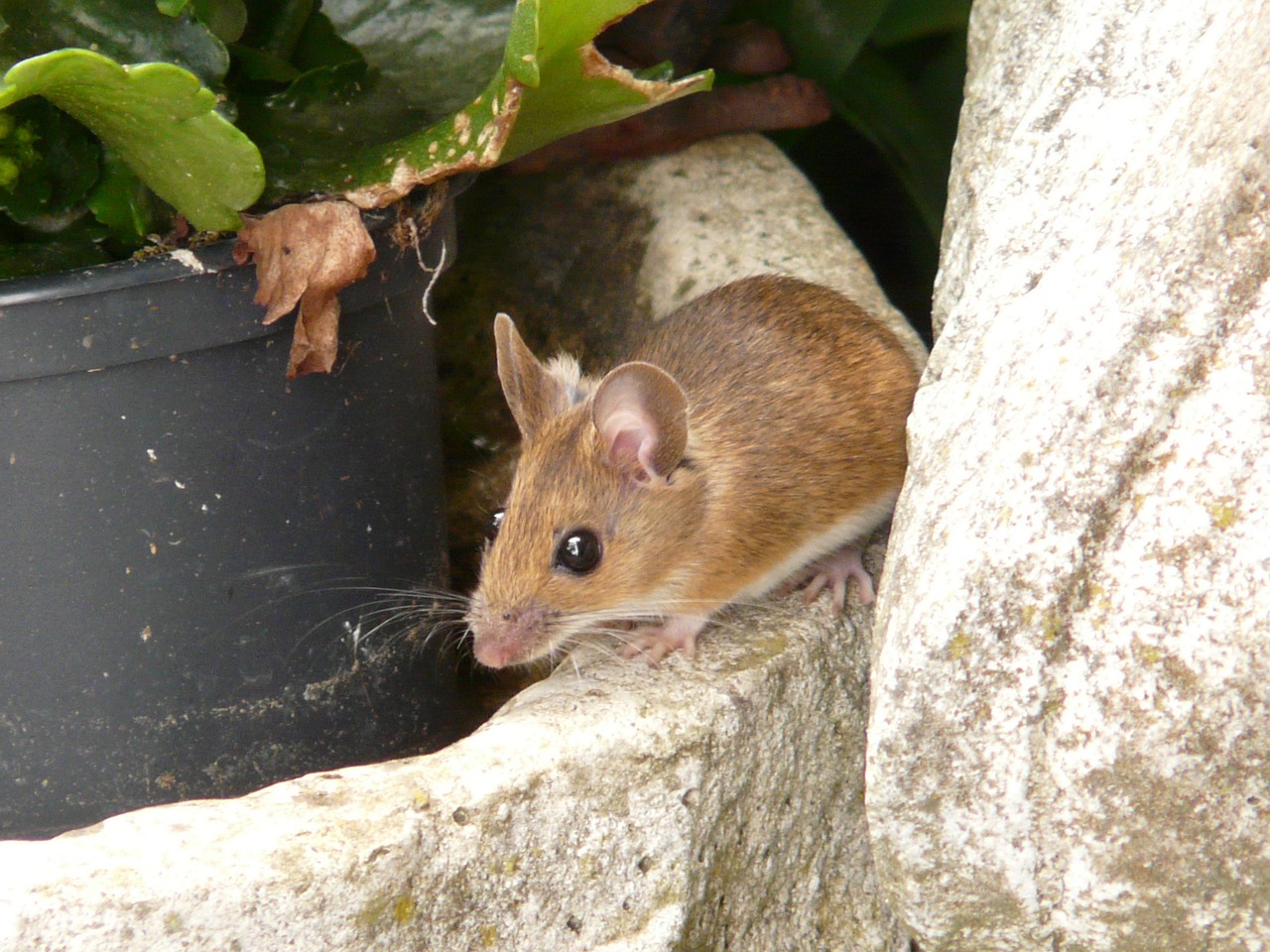
Field mice primarily inhabit woodlands, grasslands, gardens, and agricultural fields, favoring areas with dense vegetation and ample cover. Their diet is omnivorous, consisting of seeds, fruits, insects, and even small invertebrates. A key identifying feature is their relatively large ears compared to other similar rodents like house mice. Field mice play an essential role in ecosystems by dispersing seeds and serving as prey for numerous predators, contributing to the biodiversity of the British landscape.
How to identify:
Sporting a fur coat that varies from reddish-brown to greyish-brown, with a white/grey underbelly and they have large, round eyes and prominent ears. The field mouse has large back feet to help with the spring in their step and a long tail that matches the length of their bodies.
WILD STRAWBERRY

If you spot miniature, juicy red strawberries on the grassy banks of limestone and open woodland the chances are you are looking at a Wild Strawberry plant. Not actually the ancestor of commercial strawberries, the Wild Strawberry does have an excellent flavour. With long, rooting runners, it spreads quickly and low to the ground; its white flowers appear from April to July and the tasty fruits follow.
How to identify:
Wild Strawberry has glossy, trefoil leaves with toothed edges and hairy undersides; white flowers with five petals and a golden centre; and distinctive red fruit with tiny seeds. You can literally find them anywhere.
SOUTHERN MARSH ORCHID
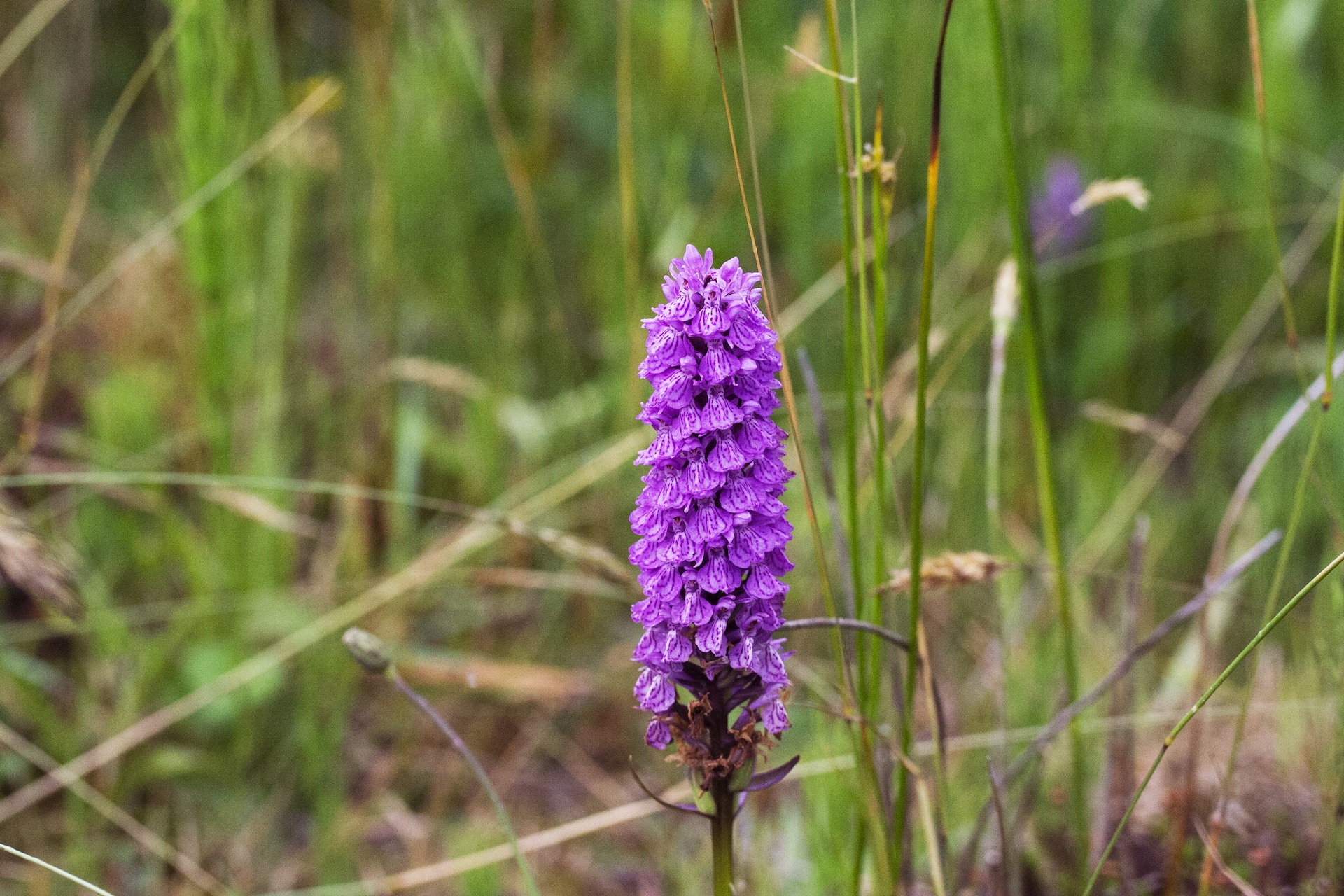
The Southern Marsh-orchid typically grows to between 30 and 50 cm in height although taller specimens up to 70 cm can occur. Difficult to distinguish from the Northern Marsh-orchid, the lip of the Southern Marsh-orchid is gently rounded and folds back on itself. The lip of the Northern Marsh-orchid is more angular. This is one of six species of orchid found in the country park and Grin Low.
How to identify:
This orchid favours damp or marshy ground and quarries. A chalk loving species, so perhaps no surprise that it can be found here. Can be seen between June and August. The leaves are generally unmarked, and the flowers vary considerably in colour from dark pink to a much paler pink; the markings on the lips of the flowers also vary considerably.
MOUNTAIN PANSY
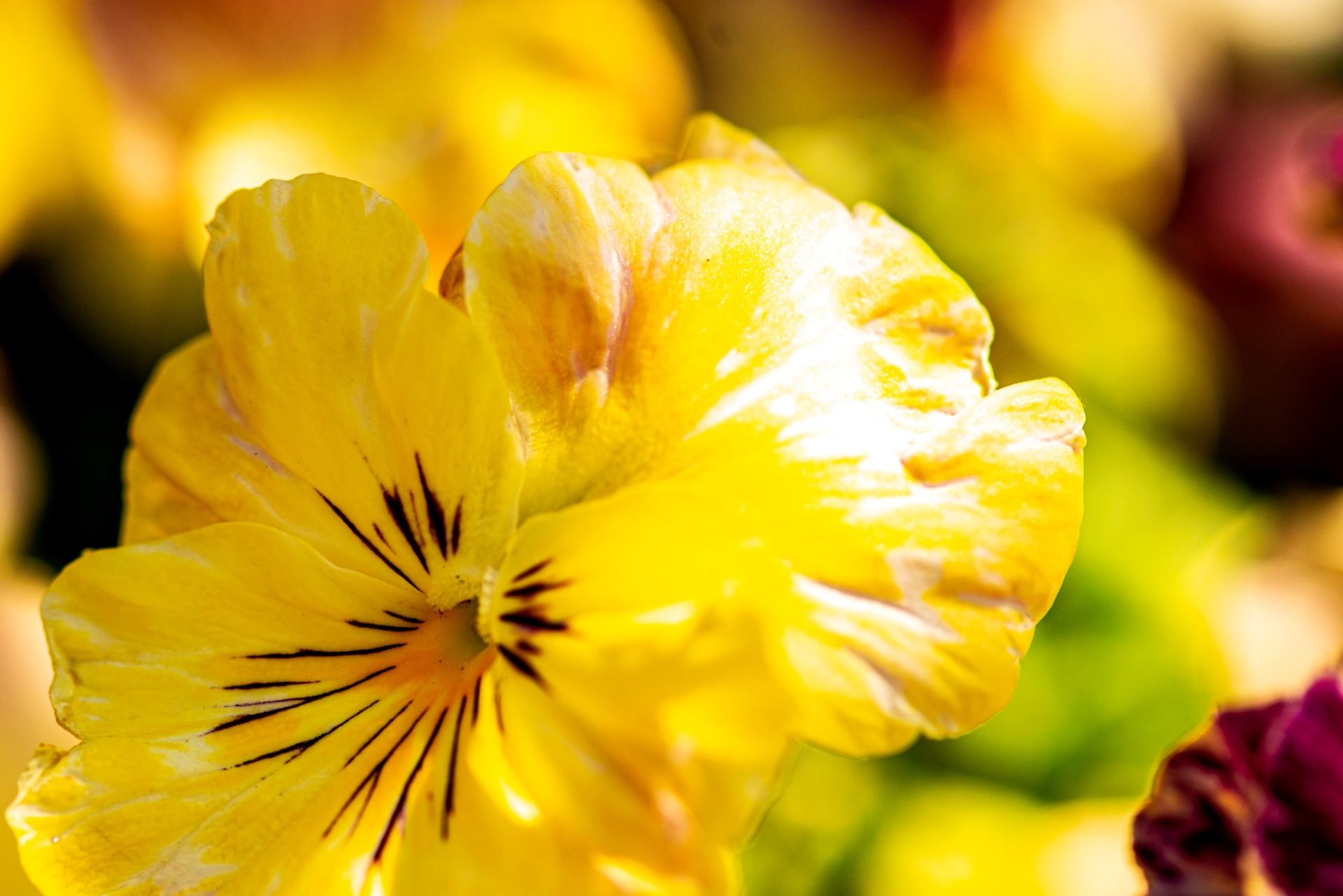
Predominantly found in the north of England, flowering between May and August and generally grows on grassland preferring lime. Rarely found in Ireland.
How to identify:
Usually the flowers are all yellow or blue-violet. Dark cat’s whisker like markings will be found on the lower three lower petals.
WOOD ANEMONE
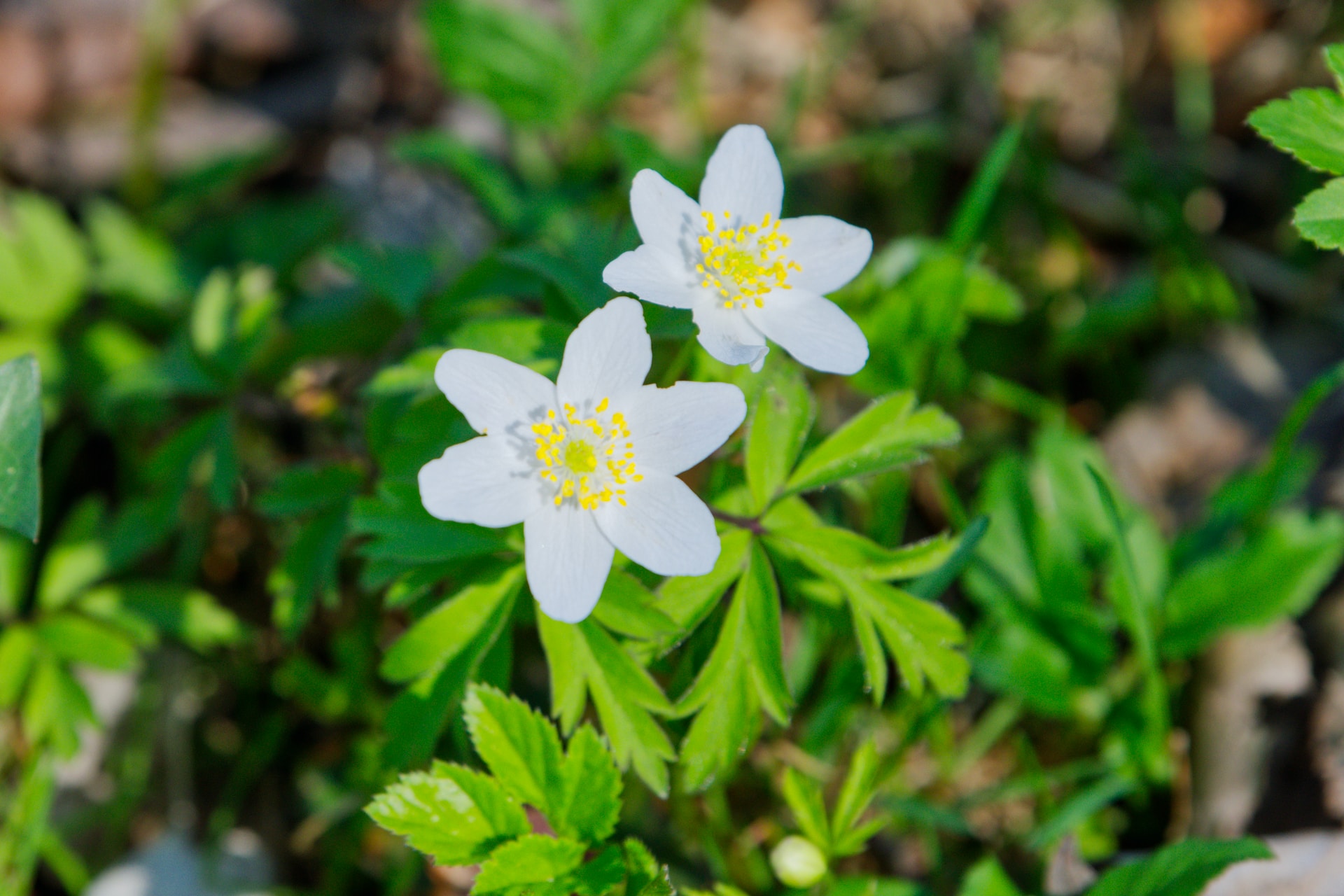
A delicate and enchanting spring wildflower that graces woodlands, meadows, and hedgerows. One of the most distinctive features of the wood anemone is its bloom time, as it emerges during early spring, often before the trees above fully leaf out. Wood anemones tend to grow in colonies, carpeting the woodland floor with their ethereal beauty.
How to identify:
It boasts a single, dainty, star-like flower per stem. The petals are typically pure white, occasionally tinged with pale pink or blue-violet hues, creating a striking contrast against its deeply divided, fern-like green leaves.
TREE CREEPER
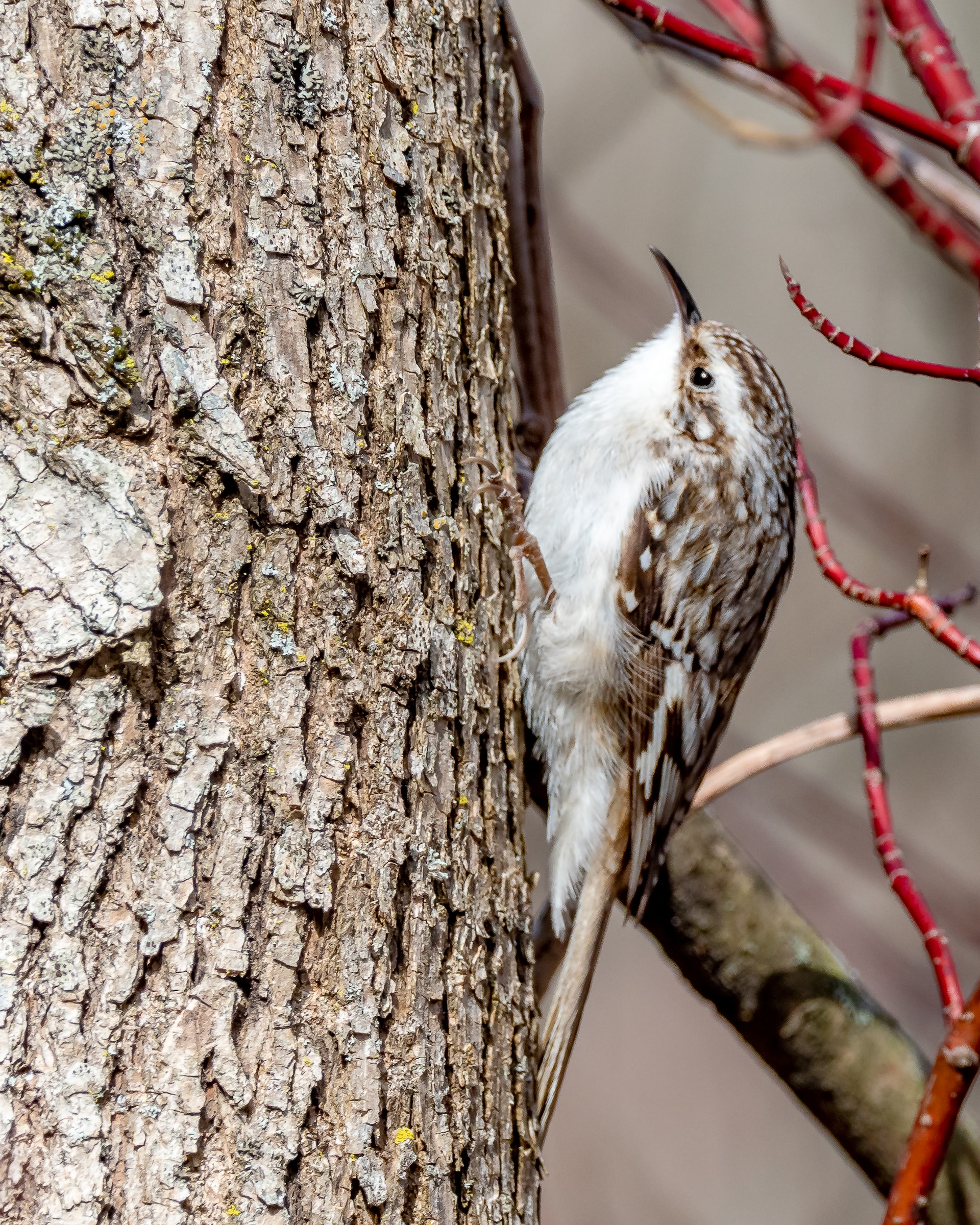
The treecreeper is a small, very active bird that lives in trees. It has a long, slender, downcurved bill. It is speckly brown above and mainly white below. It breeds in the UK and is resident here. Birds leave their breeding territories in autumn but most range no further than 20 km. Its population is mainly stable.
How to identify:
Best looked for on the trunks of trees in woodland. In autumn and winter, it often joins flocks of tits and other small birds, so if you come across such a flock in a wood, it is worth listening out for a treecreeper among them. They can be seen all year round.
GREAT SPOTTED WOODPECKER
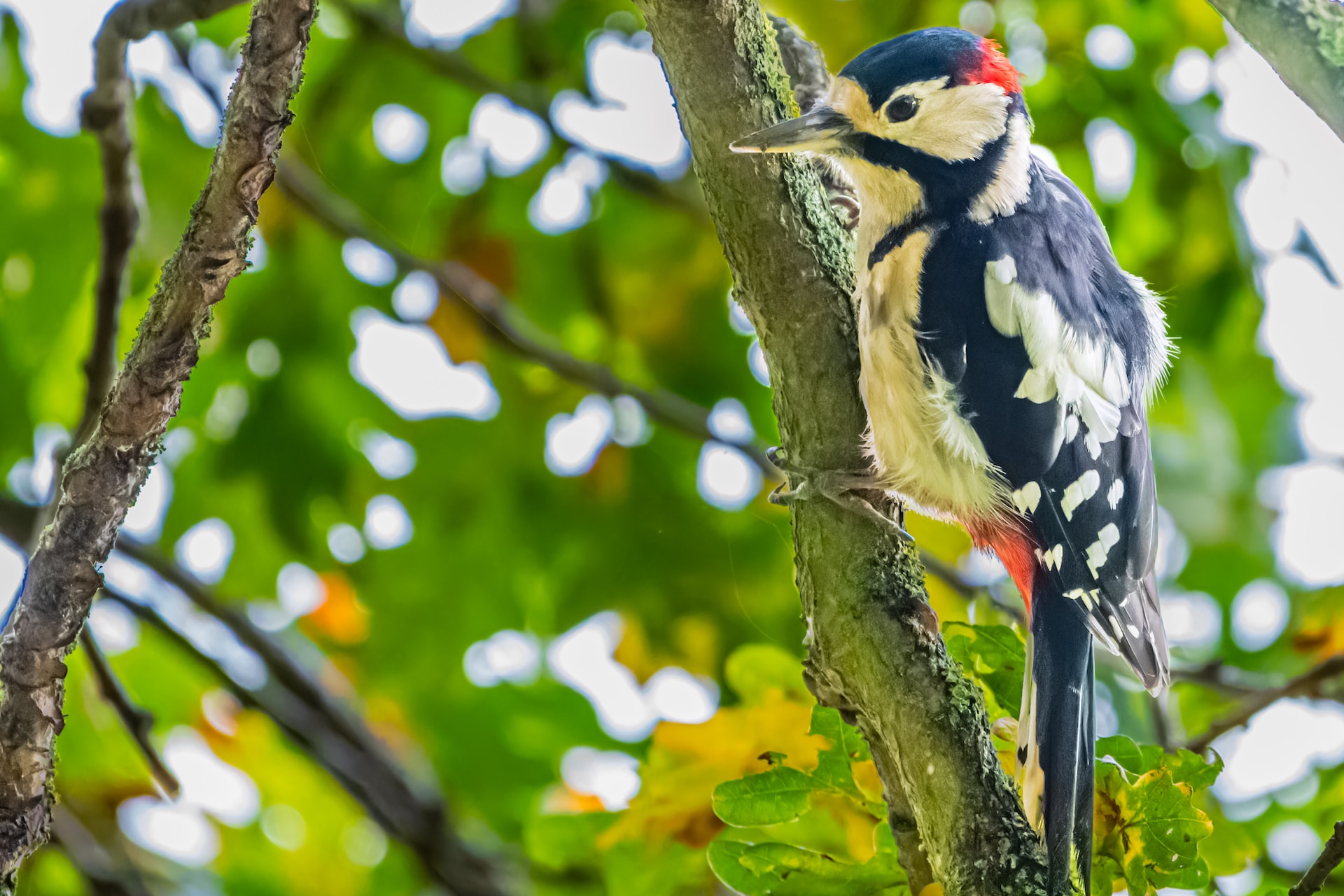
About blackbird-sized and striking black-and-white. It has a very distinctive bouncing flight and spends most of its time clinging to tree trunks and branches, often trying to hide on the side away from the observer. Its presence is often announced by its loud call or by its distinctive spring ‘drumming’ display. The male has a distinctive red patch on the back of the head and young birds have a red crown.
How to identify:
Look in woodlands, especially with mature broad-leaved trees. Also in parks and large gardens. Will come to peanut feeders and birdtables. Common in England and Wales and they can be seen all year round.
TAWNY OWL
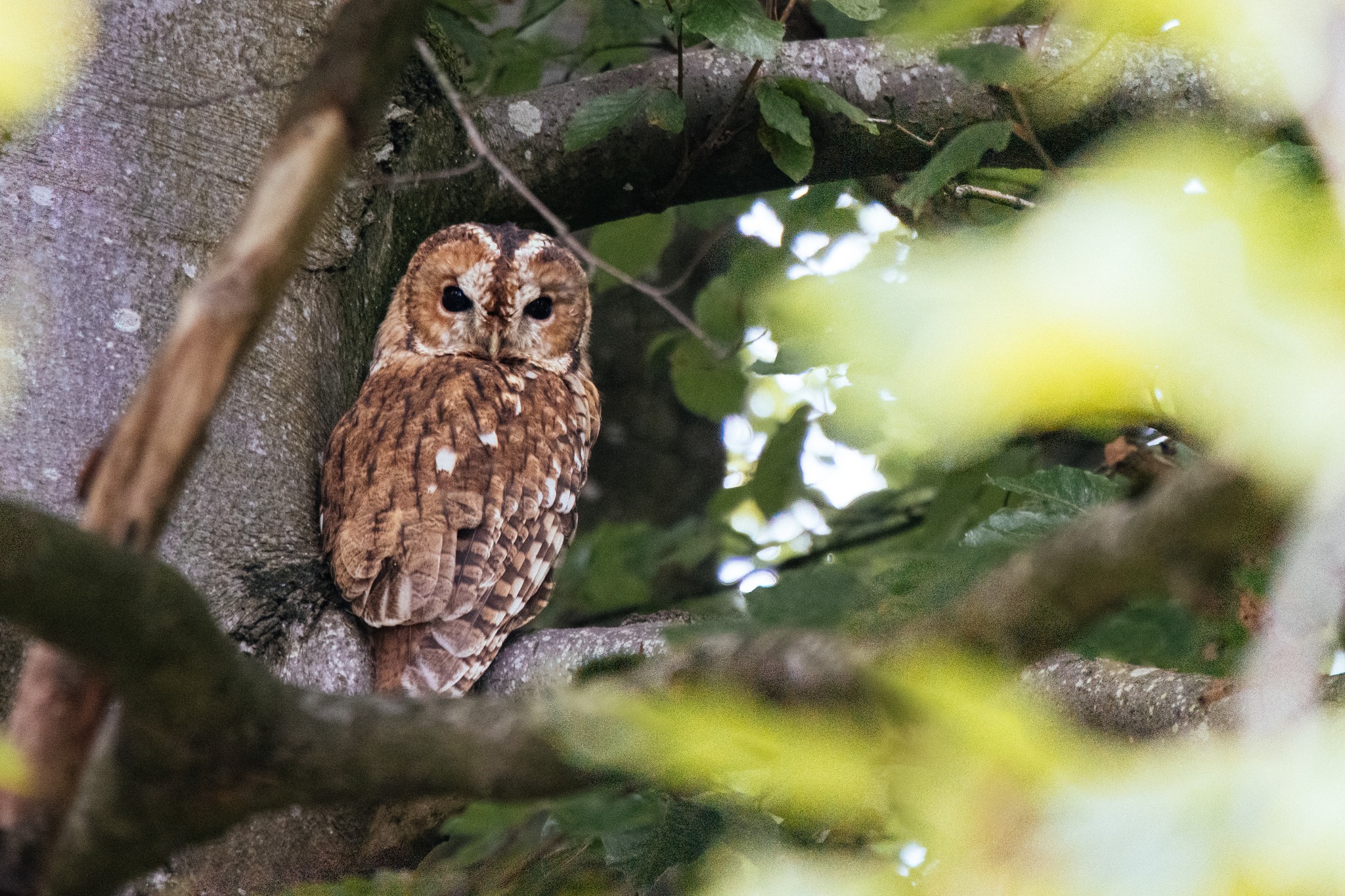
The tawny owl is an owl the size of a pigeon. It has a rounded body and head, with a ring of dark feathers around its face surrounding the dark eyes. It is mainly reddish brown above and paler underneath. It is a widespread breeding species in England, Wales and Scotland but not found in Ireland.
How to identify:
The tawny owl is nocturnal so it is often heard calling at night, but much less often seen. In the daytime, you may see one only if you disturb it inadvertently from its roost site in woodland up against a tree trunk or among ivy. Look for pellets below roosting places.
REDSTART
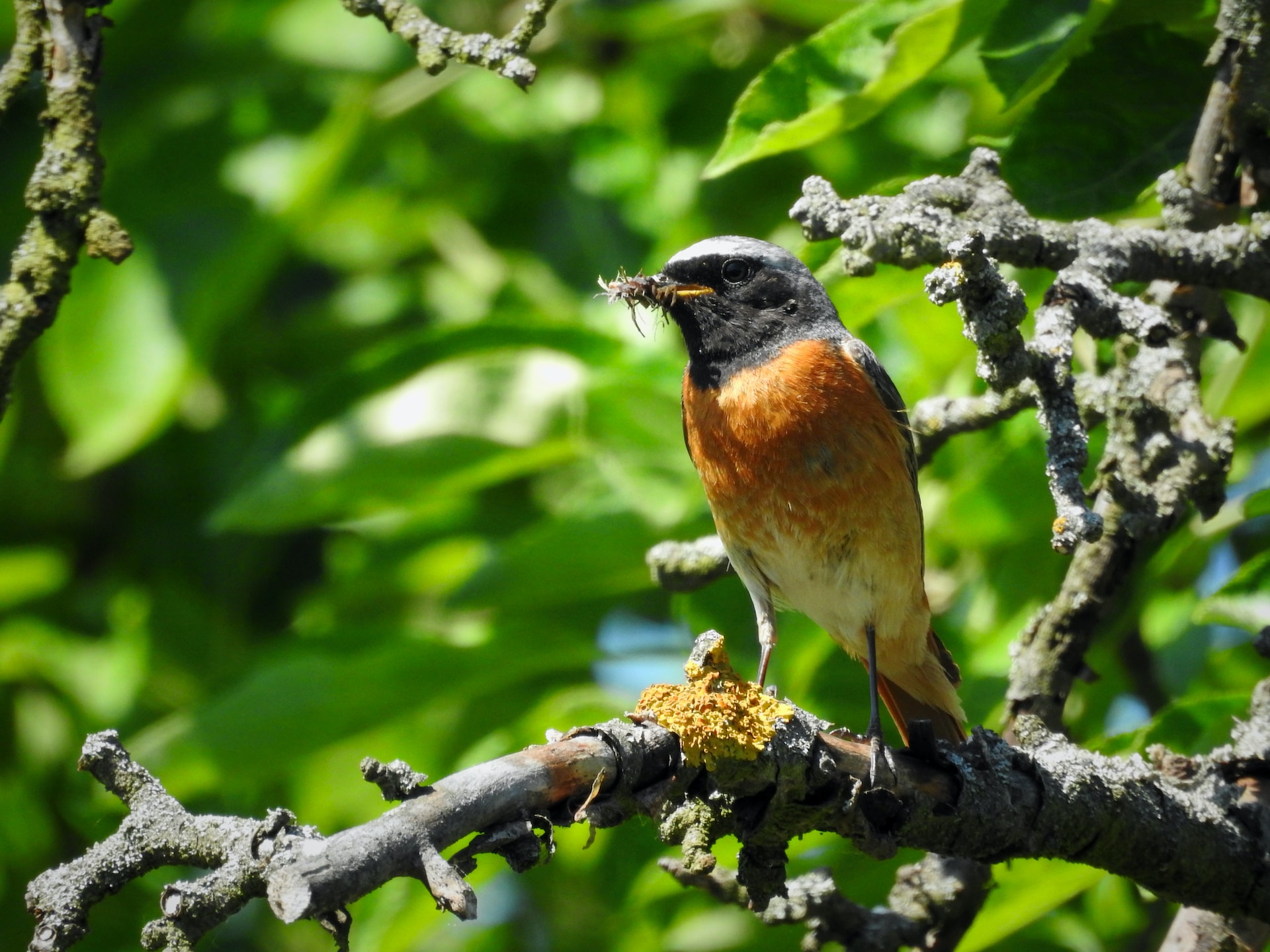
The redstart is a striking and distinctive bird species known for its vibrant plumage and lively behaviour. Typically found in woodlands, parks, and gardens across Europe and Asia, including parts of the UK. They are migratory birds, spending their winters in Africa and returning to their breeding grounds in the spring. One of their most prominent behaviours is their flicking or quivering tail, which is believed to be a territorial display. They are also known for their melodious and cheerful songs during the breeding season. Redstarts primarily feed on insects and are skilled flycatchers.
How to identify:
Adult male redstarts are easily identifiable with their fiery orange-red tails and contrasting slate-grey upper-parts, while females and juveniles display more subdued colours with brownish-grey tails.
WOOD WARBLER
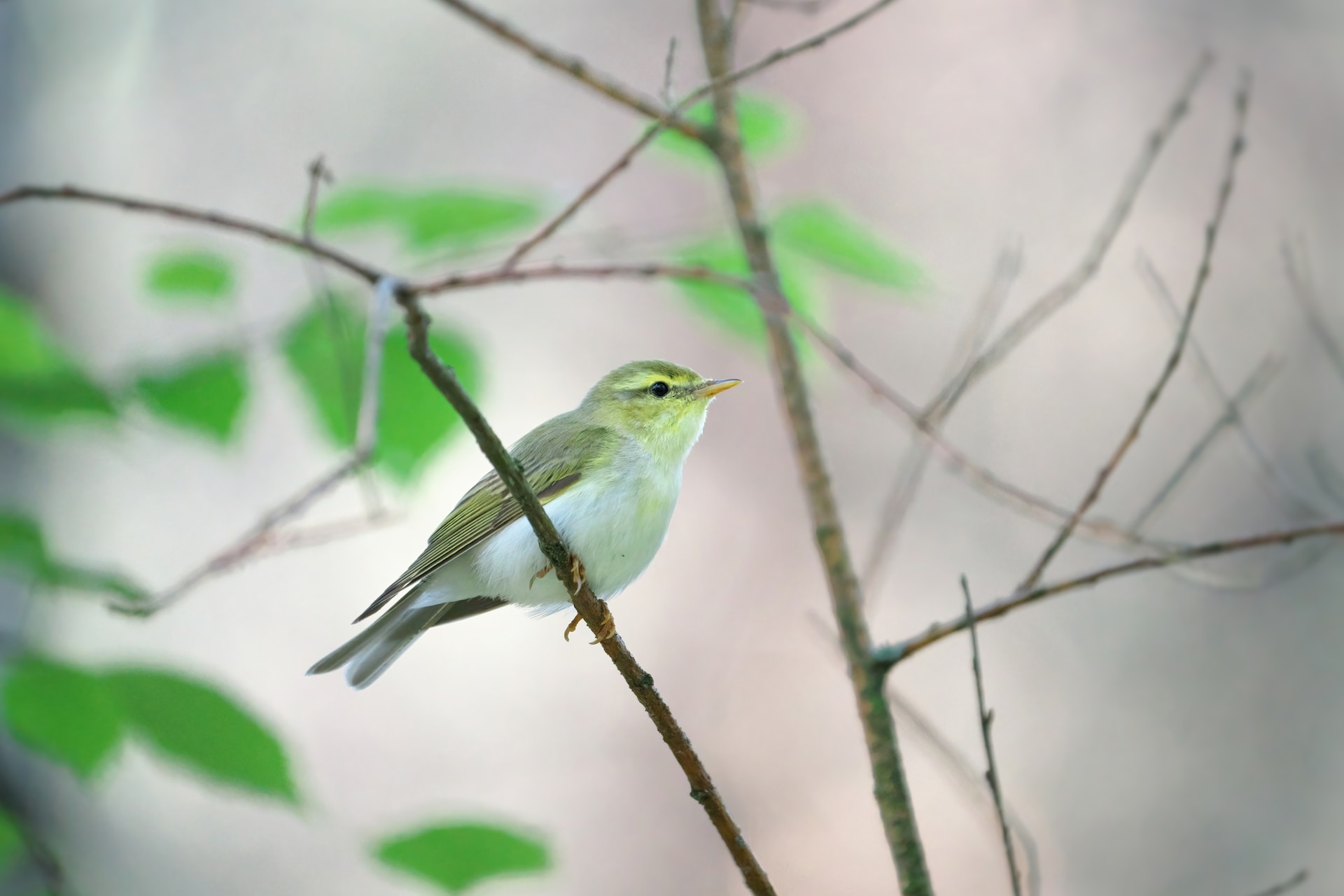
The wood warbler is a common and widespread leaf warbler which breeds throughout northern and temperate Europe, and just into the extreme west of Asian Russia in the southern Ural Mountains. This warbler is strongly migratory and the entire population winters in tropical Africa.
How to identify:
It has bright yellow upper parts, throat and upper chest and white under parts. The species is widespread and numerous in deciduous forest in Europe and reaches its highest densities in the UK in the western oak woods of Wales. The Wood Warbler’s song, likened to a spinning coin, is a good way to locate a male in spring.
Of course wildlife at Poole’s Cavern and Buxton Country Park is only part of the story here, the show-cave for which tours go every hour, is one of Derbyshire’s most popular visitor attractions. Their gift shop sells an array of gifts and books and there’s a field guide booklet for sale on how to identify lots of wildlife in the woodlands and park here. Café @ the Cavern offering hot and cold drinks with breakfasts and light lunches and snacks.
Did You Enjoy This?
You might like our regular newsletter. We put all the best events, cultural highlights and offers from Buxton and the Peak District in your inbox every month.
This information will only be used to send you this newsletter. It is stored in Mailchimp.






